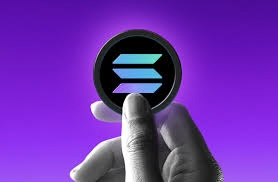Lower collateral requirements and enhanced interoperability in DeFi
Nolus aims to improve efficiency, scalability and user experience in the DeFi with upcoming features like volatile base currencies, automated lease strategies and enhanced cross-chain capabilities.
In decentralized finance (DeFi) , borrowers often struggle with high collateral requirements, while lenders grapple with fragmented liquidity and volatile assets. Traditional DeFi platforms demand significant overcollateralization, creating barriers to entry and reducing capital efficiency.
Addressing high collateral requirements in DeFi
As users navigate complex protocols and risk sudden liquidations, the need for a user-friendly solution becomes clear. Simplifying access to leveraged investments, minimizing risks and enhancing interoperability across diverse markets are the keys to unlocking DeFi’s full potential.
Nolus , a semi-permissioned blockchain, seeks to address these issues by bridging lenders and borrowers in a DeFi money market. The protocol’s DeFi Lease feature allows borrowers to secure up to 150% financing on their initial investments.
Drawing inspiration from traditional leasing, which involves paying a fraction upfront and gaining ownership upon repayment, Nolus’ approach seeks to reduce the high overcollateralization standards typically seen in DeFi, offering borrowers favorable loan terms and greater capital efficiency.
Nolus emphasizes interoperability, connecting various liquidity sources across blockchains without fragmenting assets. This capability enables seamless asset swaps on integrated decentralized exchanges (DEXs) , streamlining the lending process and ensuring that liquidity providers handle primarily stable assets.
Expanding cross-chain capabilities
Cointelegraph Accelerator participant Nolus has an ambitious roadmap for 2024, with plans to introduce new features to enhance the protocol’s efficiency, scalability and performance.
In the second quarter of 2024, Nolus plans to introduce volatile base currencies. The update will allow borrowers to use volatile assets as base lending currencies, enabling the opening of short lease positions across various markets.
Lenders will have the option to earn yields on assets such as Bitcoin ( BTC ), wrapped Ether (wETH) and Neutron (NTRN) — a feature that will be gradually integrated into the Nolus app throughout the year.
Another development is Project X, an experimental scaling solution to extend Nolus’ cross-chain capabilities .
Additionally, Nolus will introduce lease strategies to automate various platform tasks like interest repayments and liquidation safeguards. These strategies will also offer whitelisted yield farming options for leveraged assets, potentially offsetting interest and, in some instances, the principal for active lease positions.
Enhancing the user experience
The Nolus Protocol enhances the user experience with a feature-rich DeFi suite. Upcoming enhancements include detailed profit and loss analytics, revamped lease position data, onchain push notifications, enhanced historical data, one-click asset bridging, support for WalletConnect and compatibility with more wallet extensions.
In conjunction with these new features, Nolus will launch the second version of its application. The update is designed to address feedback from users and community members, rectifying any shortcomings in user experience and further enhancing the overall interface.
The Nolus blockchain itself looks for a major upgrade with the introduction of Nolus Core v1. Bringing new features and stability improvements, the upgrade will introduce fee abstraction, which allows users to pay network fees with assets other than Nolus’ native token, NLS.
The development will also update the CometBFT, Cosmos SDK and IBC stack to their latest versions, enabling the addition of arbitrary data to the consensus and improving disk storage and overall performance. Furthermore, the ICA v2 implementation will facilitate near-instant cross-chain transactions, enhancing the user experience.
Nolus’ roadmap for 2024. Source: Nolus
Kamen Trendafilov, co-founder and CEO of Nolus, explained the importance of good user experience for DeFi platforms, stating:
“By simplifying the complexity of DeFi and making it more accessible to a broader user base, DeFi protocols can pave the way for a more inclusive and efficient decentralized financial ecosystem.”
Platforms like Nolus are paving the way for a more inclusive and efficient decentralized financial ecosystem. By addressing high collateral requirements, fragmented liquidity and complex user experience, these innovations can unlock DeFi’s full potential, making it accessible and beneficial to a broader range of users.
Disclaimer. Cointelegraph does not endorse any content or product on this page. While we aim at providing you with all important information that we could obtain in this sponsored article, readers should do their own research before taking any actions related to the company and carry full responsibility for their decisions, nor can this article be considered as investment advice.
Disclaimer: The content of this article solely reflects the author's opinion and does not represent the platform in any capacity. This article is not intended to serve as a reference for making investment decisions.
You may also like
Analysis: Bitcoin CME futures spread narrows to $490 as Trump effect fades
Calaxy, founded by NBA star Dinwiddie, launches Web3 creator fund
OpenAI releases new business tools for building AI agents
Share link:In this post: OpenAI releases Responses API, a new tool that helps businesses create AI Agents. Responses API will help developers build agentic apps and help businesses search through company files. OpenAI is also releasing an open-source Agents SDK that oversees agentic AI activities and performs various tasks.
SEC delays approval of XRP, SOL, LTC, ADA, and DOGE ETFs
Share link:In this post: The SEC has delayed approval decisions for XRP, SOL, LTC, ADA, and DOGE spot ETFs, pushing deadlines to May 2025. Official filings confirm the delays, with the SEC citing the need for more time to review the proposals. The SEC’s Crypto Task Force will hold a public roundtable on March 21 to discuss crypto regulations and security classifications.

